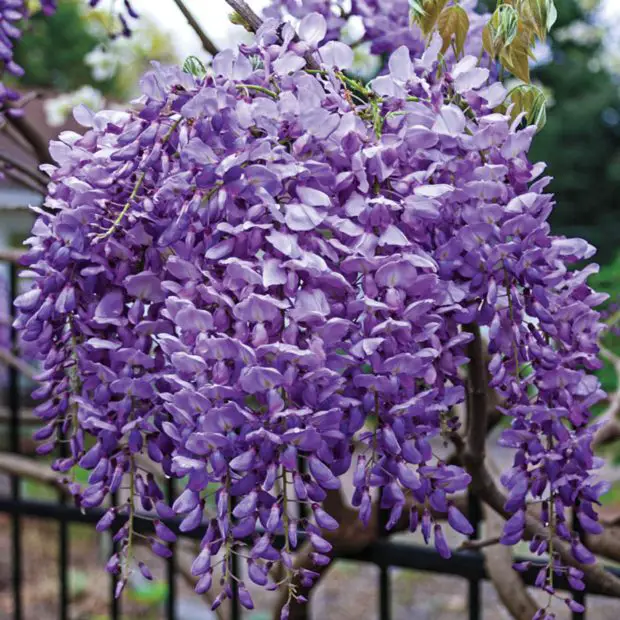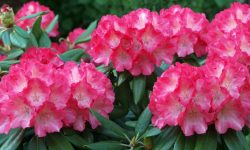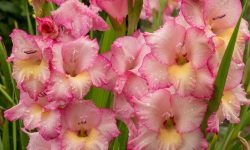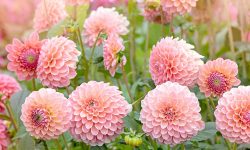There’s nothing quite like the breathtaking sight of wisteria in full bloom. With its cascading clusters of lavender, blue, or white flowers, this stunning vine transforms gardens into dreamy, fragrant wonderlands that feel almost magical. But knowing exactly when wisteria will burst into bloom is key to making the most of its spectacular display.
Understanding the Blooming Cycle of Wisteria

Wisteria’s blooming cycle is both beautiful and predictable when grown under the right conditions. Most types—especially the popular Chinese (Wisteria sinensis) and Japanese (Wisteria floribunda) varieties—produce their main flush of flowers in spring, typically between March and May depending on the climate. In these weeks, cascading racemes of violet, white, or pink blossoms emerge on bare branches before the foliage appears, creating a breathtaking visual effect.
In warm regions or under ideal care, some wisterias will offer a second, lighter bloom in mid to late summer. These secondary blooms are shorter and less abundant but still fragrant and ornamental. It’s worth noting that younger plants, especially those grown from seed, may take many years to reach blooming maturity—sometimes up to 10 or more. In contrast, grafted or cutting-grown plants tend to flower sooner, often within 3 to 5 years.
Temperature, pruning, sun exposure, and even soil quality all play a role in the plant’s annual blooming rhythm. A well-timed winter pruning and a sunny, south-facing location will help ensure your wisteria follows a strong, consistent flowering cycle year after year.
Key Blooming Seasons by Wisteria Type
Japanese Wisteria (Wisteria floribunda)
Japanese wisteria typically puts on its spectacular floral display in mid to late spring, most often blooming between April and May. The exact timing can shift depending on your region’s climate, with southern areas seeing earlier blooms and cooler zones experiencing a slight delay. This variety is celebrated for its impressively long flower clusters—sometimes stretching up to 36 inches—that hang gracefully like a floral chandelier. These fragrant blossoms usually appear just before or alongside the first flush of leaves, creating an ethereal scene of suspended lavender, violet, pink, or white blooms. With careful pruning and full sun, this variety can produce an especially dramatic bloom.
Chinese Wisteria (Wisteria sinensis)
Chinese wisteria often greets the season a little earlier than its Japanese cousin, typically beginning to bloom in mid-April in warm climates and extending into May in cooler zones. Its racemes are shorter—around 6 to 12 inches—but make up for it with an intense fragrance and a quick-growing, twining habit that can cover arbors and pergolas in just a few years. One key advantage of Chinese wisteria is its potential to bloom more than once a year. If pruned correctly after the spring flush, many plants will reward you with a second, smaller wave of blooms in late summer, offering extended beauty well into the season.
American Wisteria (Wisteria frutescens)
American wisteria has a later bloom time than the Asian species, generally flowering from late spring into early summer—often in May or June. Native to the southeastern United States, this variety offers a more manageable growth habit, with vines that are less aggressive and easier to control. Its flowers appear in shorter, denser clusters that measure about 4 to 6 inches, making it ideal for smaller gardens or more formal landscapes. While it lacks the dramatic cascading racemes of the Asian species, American wisteria compensates with its reliable flowering, adaptability, and better behavior around native ecosystems.
Kentucky Wisteria (Wisteria macrostachya)
Kentucky wisteria blooms around the same time as its American cousin, with its peak usually occurring from late spring into early summer—generally May through early July, depending on location. This variety is particularly valued in colder climates, as it is the hardiest of all wisteria types and can withstand winter temperatures down to USDA Zone 3 with proper care. The flowers are gently scented, arranged in clusters up to 12 inches long, and sometimes appear again later in the summer if the plant is healthy and well-maintained. Its non-invasive nature and consistent blooming habits make it an ideal option for gardeners seeking beauty without aggressive spreading.
Bloom Timing by USDA Hardiness Zone
Understanding when wisteria blooms based on your USDA Hardiness Zone is essential for timing garden tasks like pruning, fertilizing, and planning companion plants. While wisteria generally blooms from mid-spring to early summer, exact timing can vary by climate and species. Below is a detailed breakdown of bloom timing by zone, helping you anticipate your plant’s flowering window with greater precision.
Zones 3–4: Late Bloomers in Cold Climates
In these northern zones, only the hardiest varieties—like Kentucky wisteria (Wisteria macrostachya)—are suitable for reliable flowering. Due to the longer winters and later thaw, bloom time often begins in early to mid-June. Flowering may be slightly delayed if the spring is especially cold or wet. Providing protection from late frosts and planting in a south-facing location with full sun can help accelerate blooming.
Zones 5–6: Reliable Blooming with Hardy Varieties
Gardeners in Zones 5 and 6 will see their wisteria bloom between mid-May and early June, depending on the species. Kentucky and American wisteria are still the safest choices, though some gardeners successfully grow Japanese or Chinese wisteria with winter protection and proper pruning. Keep in mind that late spring frosts can occasionally damage flower buds, so situating the plant near a heat-retaining wall can provide a microclimate that protects against setbacks.
Zones 7–8: Peak Blooming Conditions
These temperate zones offer ideal conditions for all wisteria types. Chinese and Japanese wisteria typically begin blooming in mid to late April, often as early as the first signs of consistent warm weather. American and Kentucky wisteria bloom slightly later, usually around mid to late May, but may produce a second flush in July or August with the right care. Full sun exposure and well-drained soil will encourage the most abundant flowering.
Zones 9–10: Early Bloom and Multiple Flushes
In warm southern regions, Chinese and Japanese wisteria can start blooming as early as late March or early April. The warmer climate not only leads to early flowering but also allows for reblooming cycles throughout the growing season. With regular pruning and fertilizing, gardeners in these zones may enjoy flowers from spring into early fall. American wisteria also performs well here and benefits from the long growing season, sometimes blooming into late summer.
Zone 11 and Above: Rare Bloomers Due to Heat Stress
Wisteria generally struggles in extremely hot tropical regions, where the plants may grow well vegetatively but fail to bloom reliably. Excessive heat can disrupt dormancy cycles and limit the chilling hours many wisteria types require for bud development. In these zones, flowering is unpredictable or absent, especially without a cool dormant season. Gardeners in Zone 11 may have better success with tropical substitutes or should grow wisteria in large containers that can be cooled artificially during winter months.
By tailoring your expectations and care schedule to your USDA zone, you can make the most of your wisteria’s bloom season and enjoy its spectacular flowers year after year.
Factors That Influence Wisteria Bloom Time
Several key factors affect when and how well wisteria blooms. Understanding each one can help you encourage timely, abundant flowering.
Plant Maturity
Wisteria often takes 5 to 7 years to mature before it begins blooming, especially if grown from seed. During this time, the vine focuses on building strong roots and woody growth. Grafted or nursery-grown varieties usually bloom faster—within 2 to 3 years.
Lack of flowers in young plants is normal and not a sign of poor health. To encourage faster maturity, ensure full sun, good drainage, and avoid overfeeding with nitrogen. With proper care and a bit of patience, your wisteria will reward you with abundant blooms once it’s ready.
Pruning Techniques
Pruning is one of the most critical practices affecting wisteria bloom timing and abundance. Wisteria forms its flower buds on old wood—growth from the previous season—so pruning at the wrong time can accidentally remove the very buds that were set to bloom.
The best approach is to prune twice a year: once in late winter to shape the plant and encourage flower bud formation, and again in mid to late summer (typically July or August) to cut back long, whippy shoots that drain energy from the vine. Summer pruning helps focus the plant’s resources on flower production rather than excessive foliage.
Avoid hard pruning during fall or early spring, as this can severely reduce blooming potential for the coming season. Instead, develop a consistent schedule that keeps the vine tidy while respecting its natural flowering rhythm.
Sunlight Exposure
For wisteria to bloom on time and in abundance, sun exposure is non-negotiable. These vines require at least 6 full hours of direct sunlight daily, though more is even better. In low-light or heavily shaded areas, wisteria may grow vigorously but refuse to flower—or only bloom sparsely and late.
Morning sun is especially valuable, as it helps dry the foliage and awaken the plant’s internal rhythms. South- or west-facing locations are typically ideal. If your vine is planted near trees, walls, or buildings that block light for much of the day, consider relocating it or selectively pruning nearby plants to increase exposure.
Wisteria growing on a north-facing fence or in filtered light under a large tree may never bloom reliably, regardless of age or care.
Soil and Water Conditions
Wisteria thrives in well-draining, moderately fertile soil. Soil that’s too rich in nitrogen encourages leafy growth instead of flowers, delaying blooming. A slightly acidic to neutral pH (6.0–7.0) is ideal for healthy root development and bud formation.
Consistent moisture is important, especially during the growing season, but the soil should never be soggy. Overwatering can lead to root rot and reduced flowering. Once established, wisteria becomes drought-tolerant, but regular deep watering during dry spells supports reliable blooming.
Climate and Weather Patterns
Wisteria bloom time is closely tied to seasonal climate conditions. In regions with mild, predictable springs, wisteria tends to bloom on schedule—typically from mid-spring to early summer depending on the variety. However, unseasonable cold snaps or late frosts can damage forming flower buds, leading to delayed or diminished blooms that year.
Prolonged cool or rainy weather in early spring may also slow bud development and reduce flower quality. On the other hand, warmer-than-usual winters can trigger premature growth, making buds more vulnerable to frost damage.
Microclimates within your garden also matter. Wisteria growing against a south-facing wall or in a sheltered spot may bloom earlier than those in exposed or shaded areas. Understanding your local conditions and providing protection from extreme weather—such as covering buds during a surprise frost—can help ensure a more consistent and spectacular bloom display each year.
How to Encourage Early and Abundant Blooming
Provide Ample Sunlight
Sunlight is the most critical factor for wisteria blooming. These vigorous vines require at least 6 hours of direct sun daily—preferably morning sunlight, which is less harsh and helps dry dew quickly, reducing fungal risks. Plants growing in shade or even dappled light often produce lush foliage but no flowers. If your wisteria is underperforming, assess nearby structures or trees that may be blocking light. Transplanting to a sunnier location or pruning surrounding vegetation can dramatically improve blooming.
Master the Art of Pruning
Pruning wisteria is a horticultural skill that directly impacts blooming. Unchecked, the plant puts energy into rampant vine growth rather than flower production. By pruning twice a year—once in late summer and again in late winter—you redirect that energy into blooming. Summer pruning (typically in July or August) controls excess growth, while winter pruning (January or February) encourages flower bud development on old wood. Be consistent year to year, and over time, your wisteria will reward you with increasingly profuse blooms.
Avoid High-Nitrogen Fertilizers
Fertilizers high in nitrogen promote vegetative growth, which results in thick foliage but few or no flowers. For best results, choose a balanced fertilizer with lower nitrogen (N) and higher phosphorus (P) content—something like a 5-10-10 formula. You can also amend the soil with bone meal or rock phosphate in early spring to stimulate bud production. If your wisteria is mature but still not blooming, test the soil to check for excess nitrogen or other nutrient imbalances.
Apply Root Stress Strategically
Mature wisteria vines that grow vigorously but don’t bloom may benefit from a bit of strategic stress. One proven method is root pruning. In late winter, insert a sharp spade into the ground about 12–18 inches from the plant’s base and make a few clean cuts in a circle around the root zone. This process shocks the plant just enough to shift its energy from vegetative growth to reproduction—i.e., blooming. Be careful not to overdo it, as excessive root damage can backfire.
Train Vines with Intention
Wisteria’s natural tendency is to grow wild and dense, often twisting into itself. Without training, flower buds can become buried in the mass of stems and leaves, limiting bloom potential. Use strong supports like pergolas, trellises, or wires to guide the vines in a structured pattern. This increases light penetration and air circulation, both of which support better flower production. As the plant matures, gently direct new shoots to grow horizontally—horizontal vines tend to bloom more prolifically than vertical ones.
Signs Your Wisteria Is Getting Ready to Bloom
Swelling Flower Buds
Swelling buds are a clear sign that wisteria is about to bloom. These round, plump buds appear in late winter to early spring along older woody stems. Unlike leaf buds, which are narrow and pointed, flower buds are fuller and often form in clusters.
As they swell, they may take on a slight fuzziness and show hints of purple or pink. This change means the plant is storing energy for flowering. Take care not to prune them off by mistake—especially during late-winter pruning—since wisteria blooms on old wood. Spotting these buds is a strong sign that blooming is near.
Reduced Vegetative Growth
As wisteria approaches its blooming phase, you may notice a temporary slowdown in leafy or vine growth. This is because the plant begins diverting its energy from producing new shoots and leaves to developing flower buds. Instead of aggressive tendril growth, the vine appears more dormant or stable, particularly in late winter to early spring.
This reduction in vegetative activity is a positive sign—it means the plant is entering its reproductive stage. If you’ve been managing pruning and feeding correctly, and growth slows while buds swell, it’s often a clear signal that blooms are just around the corner.
Increased Fragrance and Pollinator Activity
Why Your Wisteria Isn’t Blooming: Troubleshooting Tips
The Plant Is Too Young
Wisteria is a long-lived vine, but one of its most frustrating traits for gardeners is the delay in blooming. If grown from seed, it can take anywhere from 5 to 10 years—or even longer—before the first flower cluster appears. This delay is because seed-grown plants need time to reach maturity and develop the woodiness required for bud production. In contrast, grafted wisteria or those propagated from cuttings of mature plants tend to bloom within 2 to 3 years, sometimes even sooner with optimal care. If your vine appears healthy, vigorously growing, and free from pests or diseases, but has never bloomed, age is likely the only factor at play. In this case, there’s no need for drastic action—only patience, proper care, and time will encourage the natural transition to blooming.
Pruning at the Wrong Time
Wisteria requires precise pruning to bloom well, and incorrect timing can completely eliminate flower buds before they ever have a chance to open. The vine sets its flower buds during late summer on short spurs that grow from the main stems. If you prune too late in the season—especially in fall, winter, or very early spring—you risk cutting off these buds before they bloom in spring. Over-pruning or aggressively cutting back large portions of the plant can also redirect the vine’s energy toward vegetative growth rather than flowering. The best practice is to follow a two-phase pruning schedule: a structural pruning in late winter to control shape and a lighter trimming in mid-to-late summer, after flowering, to encourage next year’s blooms. This balance helps maintain a manageable size while promoting consistent flower production.
Inadequate Light
Wisteria thrives in bright conditions and requires full sun—at least 6 to 8 hours of direct sunlight daily—to develop flower buds. Insufficient light is one of the most commonly overlooked reasons for non-blooming vines. Sometimes a wisteria that once bloomed well can stop flowering after nearby trees mature or buildings cast new shadows. Even partial shade can shift the plant’s energy toward leaf and vine growth, reducing or eliminating its blooming potential. To remedy this, observe the sun’s path throughout the day and consider trimming back overhanging branches or even relocating the vine to a sunnier location if possible. Training the plant on a trellis or pergola positioned to receive morning and afternoon sun can dramatically improve flowering over time.
Excess Nitrogen in Soil
Wisteria vines are vigorous growers, and when they receive too much nitrogen—especially from nearby lawn fertilizer—they respond by producing lush, leafy vines at the expense of flower formation. A nitrogen-rich environment tells the plant to focus on foliage, not reproduction. If your wisteria has thick green leaves but no buds, this imbalance is likely the culprit. A soil test can confirm elevated nitrogen levels. To correct it, avoid fertilizing your wisteria with general-purpose or lawn fertilizers, and instead opt for a bloom booster fertilizer that’s higher in phosphorus and lower in nitrogen. Products with an N-P-K ratio like 5-10-10 can be ideal. You can also apply bone meal or rock phosphate to gradually shift the nutrient balance and support future blooms.
Late Frost Damage
Wisteria forms flower buds well before spring arrives, and these developing buds are extremely sensitive to freezing temperatures. A sudden late frost in early spring can damage or destroy the buds just before they open, causing them to drop or dry out without ever flowering. This can be disheartening, especially if your vine was showing signs of readiness like bud swelling or fragrance. To prevent frost-related bloom loss, plant your wisteria in a spot with good air circulation and protection from cold north winds. A south- or west-facing wall, especially one made of brick or stone, can create a warmer microclimate that shields the plant from sudden drops in temperature. During unseasonably cold nights, you can also use breathable frost cloth or burlap to cover the vine temporarily, helping preserve fragile buds and encouraging more consistent blooming in unpredictable climates.
Factors That Affect Wisteria Bloom Time
Species and Cultivar Differences
The timing of wisteria blooms varies depending on the species and cultivar. Chinese wisteria (Wisteria sinensis) typically flowers in mid to late spring, often before the foliage fully emerges. Japanese wisteria (Wisteria floribunda) blooms slightly later, usually in late spring to early summer, and is known for its long, elegant flower clusters. American wisteria (Wisteria frutescens), on the other hand, tends to bloom even later, often in early to midsummer. Some named cultivars like ‘Amethyst Falls’ or ‘Blue Moon’ may have unique characteristics, such as earlier flowering or the ability to rebloom. Understanding the exact type of wisteria you have helps you predict its bloom time more accurately and informs your care strategy.
Local Climate and Hardiness Zone
The local growing zone and climate play a major role in determining when wisteria will bloom. In warmer zones like 8 to 10, blooming may begin as early as March. In cooler zones such as 4 to 6, flowering is typically delayed until May or June. Spring temperature trends also influence bloom timing. A gradual warming trend may postpone blooming, while a warm, steady spring can bring on earlier flowers. Sudden cold spells in late spring can delay bud development or damage forming blooms. Even within a single garden, small variations in microclimate—like sun exposure or protection from wind—can influence when a wisteria vine starts flowering.
Sunlight and Day Length
Wisteria vines are highly sensitive to light conditions, and adequate sun exposure is essential for timely blooming. These plants thrive best with at least six hours of direct sunlight per day, although eight or more is ideal. Longer spring days stimulate hormonal changes within the plant, prompting flower buds to develop and eventually open. Vines growing in partial shade or areas that receive inconsistent light often bloom later in the season and may produce fewer flowers overall. Ensuring the vine is planted in a bright, open location encourages earlier and more abundant flowering.
Winter and Early Spring Temperatures
Wisteria buds form the previous summer and remain dormant through winter. Their ability to bloom on schedule depends in part on winter chilling and the pattern of early spring warming. A mild winter followed by a warm spring can trigger early blooming. However, a late frost may damage flower buds and delay or prevent flowering for the season. Fluctuating temperatures during the transition from winter to spring can confuse the vine’s natural rhythms, resulting in sporadic or delayed blooming. Locating wisteria near a wall or warm microclimate can provide some protection from these swings and improve flowering reliability.
Age and Maturity of the Vine
Wisteria must reach a certain level of maturity before it can begin blooming. Vines grown from seed often take between three and seven years—or even longer—to flower. Even nursery-grown grafted plants, though more reliable, may pause blooming for a season or two while they adjust to transplanting. Once a wisteria vine is well-established with a strong root system and mature woody growth, it typically settles into a consistent annual blooming pattern. The older and healthier the plant, the more abundant and timely its flowering tends to be.
How to Encourage Earlier and More Abundant Blooms
Proper Pruning Techniques
Pruning is one of the most effective ways to encourage wisteria to bloom earlier and more heavily. Wisteria flowers on old wood, so timing is everything. Follow the two-stage pruning method:
Summer pruning (usually in July or August): Cut back the current year’s long, whippy green shoots to about 6 inches or 5–7 leaflets. This channels the plant’s energy into flower bud formation instead of excessive vine growth.
Winter pruning (typically in January or February): Cut those same shoots back again, this time to 2 or 3 buds. This final cut refines the structure and maximizes flowering spurs.
Consistent yearly pruning keeps the vine in check and increases the number of blooming points.
Choosing the Right Fertilizer
Using the correct fertilizer plays a crucial role in flower production. Avoid high-nitrogen fertilizers, which promote leafy growth at the expense of blooms. Instead, opt for a low-nitrogen, high-phosphorus fertilizer—look for formulas where the middle number (phosphorus) is higher, such as 5-10-10 or 10-20-10.
Apply fertilizer in early spring, just as new growth appears, and again in early summer if needed. Overfeeding should be avoided; once or twice per season is often enough. You can also improve soil fertility naturally by mixing in bone meal or rock phosphate, which support root development and bud initiation.
Maximizing Sunlight Exposure
Wisteria thrives in full sun and requires at least 6 hours of direct sunlight per day to produce abundant flowers. Less light often results in lush foliage with minimal or no blooms. To ensure maximum exposure:
Train vines along south- or west-facing walls, fences, or pergolas.
Trim nearby shrubs or tree branches that might cast shade.
If your vine is in partial shade and not blooming, consider transplanting it in fall or early spring to a sunnier spot.
Sunlight directly influences the plant’s hormonal signals for flowering, so improving exposure often leads to earlier and richer blooming.
Supporting Plant Health Through Soil Management
Healthy wisteria vines are better bloomers. Start by ensuring the soil is well-draining, slightly acidic to neutral (pH 6.0–7.0), and rich in organic matter. Poor or compacted soil reduces root activity, which in turn impacts flowering. To enhance soil health:
Add compost or well-rotted manure each spring around the root zone.
Avoid overwatering, as wisteria dislikes soggy soil. Keep soil evenly moist but not wet.
Use mulch to retain moisture and suppress weeds without smothering the base of the vine.
Also, check for root competition. Wisteria grown near aggressive trees may struggle to establish strong roots, which can delay or reduce blooming.
How Long Wisteria Blooms Last
General Bloom Duration
Wisteria blooms typically last 3 to 4 weeks, though this can vary depending on the species, local climate, and weather conditions during flowering. Chinese wisteria (Wisteria sinensis) often has a shorter bloom period, while Japanese wisteria (Wisteria floribunda) may hold flowers a bit longer due to its slower progression. Blooms usually start in mid to late spring, sometimes earlier in warm regions, and may fade faster in hot, dry conditions.
Factors That Shorten Bloom Period
Weather has a significant impact on how long wisteria flowers last. Cool, mild spring weather helps extend the blooming period by slowing flower fade and dehydration. On the other hand, early heat waves, dry winds, or heavy rainstorms can shorten bloom time by damaging delicate petals or forcing them to drop prematurely. A sudden cold snap during early flowering can also cause partial bud loss, reducing the overall display.
How to Extend Bloom Time
To help your wisteria bloom as long as possible, provide consistent soil moisture, especially during the bud and flowering phases. Mulching around the base helps retain moisture and regulate soil temperature. Avoid high-nitrogen fertilizers during spring, which may shift energy toward leaf production. Prune correctly in late summer and late winter to promote flowering spurs rather than excessive vine growth. Growing wisteria in a sheltered location—like near a sunny wall or pergola—can also protect blooms from harsh weather and extend their life.
Frequently Asked Questions About Wisteria Blooming
How long does it usually take for a wisteria to bloom?
If your wisteria was grown from seed, it can take 5 to 10 years—sometimes even longer—to begin blooming. However, if it was propagated from cuttings or grafted from an already blooming plant, you can expect flowers in as little as 2 to 3 years. The plant’s age and origin are major factors, so knowing how it was propagated can help set your expectations.
Can I force my wisteria to bloom faster?
While you can’t truly “force” a wisteria to bloom if it’s too young or genetically reluctant, you can encourage earlier blooms by providing ideal conditions. This includes full sun, minimal nitrogen, regular pruning, and avoiding root disturbance. Also, ensure the plant is not stressed by drought, poor drainage, or competition from nearby trees. Grafted or mature cutting-grown plants will always bloom faster than seed-grown vines.
What’s the best time of year to prune wisteria for more blooms?
Wisteria should be pruned twice a year for best results. Perform the first pruning in late winter or early spring (February or March) to control the shape and remove excessive growth. The second pruning should happen in mid-to-late summer (July or August), cutting back the long whippy shoots to about six inches. This routine promotes strong flowering spurs without removing the flower buds that form the previous season.
Could the location of my wisteria affect flowering?
Yes. Sunlight exposure is critical. Wisteria needs at least 6–8 hours of full sun daily to reliably produce blooms. If your plant is in partial shade or has become overshadowed by growing trees or nearby structures, this can significantly reduce its ability to flower. Relocating the plant, pruning nearby vegetation, or installing a reflective surface like a light-colored wall behind it may help improve light levels.
How can I tell if frost has damaged my wisteria buds?
Frost-damaged buds will often appear brown, shriveled, or missing altogether in early spring. If you saw buds forming and then suddenly noticed they vanished or dried up after a cold snap, frost is the likely culprit. To prevent this in future seasons, try planting the vine near a south-facing wall, use frost cloths during cold nights, and avoid early pruning that might stimulate premature bud development vulnerable to frost.
Final Thoughts: Creating a Long-Lasting Blooming Display
Timing the bloom of your wisteria takes more than just waiting for spring. It requires knowing your species, understanding your local climate, and fine-tuning your care techniques. With the right pruning schedule, plenty of sunlight, and balanced nutrition, wisteria will reward you with breathtaking displays that become the highlight of your garden.
Whether you grow it over a pergola, train it along a fence, or let it sprawl across a trellis, wisteria’s seasonal blooms are always worth the wait. And once you’ve mastered the bloom cycle, you’ll enjoy this spectacular vine year after year—often more vibrantly than the year before.






